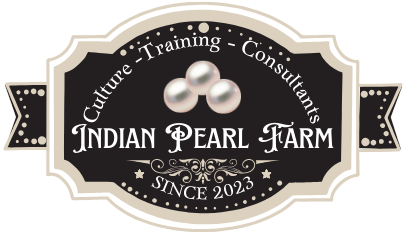How to culture Pearl in farms
Step-by-Step Pearl Farming Process – How Cultured Pearls Are Grown
Pearl farming is a precise and eco-conscious process that mimics nature to produce stunning cultured pearls. It requires skilled techniques, suitable environments, and careful nurturing of mollusks over time. Here’s a complete guide to how pearls are cultured in farms:
1. Selecting Suitable Mollusks
- Choose species known for high-quality pearl production:
- Saltwater: Akoya oysters, South Sea oysters, and Black-lipped oysters (Tahitian pearls).
- Freshwater: Mussels such as Hyriopsis cumingii.
- Mollusks should be healthy, mature, and 2–3 years old.
2. Preparing the Pearl Farm
- Select the right location based on water type:
- Saltwater farms: Calm coastal lagoons or bays with nutrient-rich water.
- Freshwater farms: Controlled ponds, lakes, or river systems.
- Maintain clean, stable water conditions for mollusk health.
3. Nucleation – The Seeding Process
- Insert a bead nucleus and donor mantle tissue into the mollusk’s gonad.
- Tools & Techniques:
- Performed in sterile conditions using specialized tools.
- Requires highly trained technicians (graft specialists).
4. Placing Mollusks in Water
- Post-surgery, mollusks are suspended in nets, baskets, or rafts.
- Continuous monitoring for:
- Water temperature and salinity
- Predators, parasites, and diseases
- Food and oxygen levels
5. Daily Care & Maintenance
- Regularly rotate and clean mollusks to ensure even nacre coating.
- Remove unhealthy or dead mollusks to prevent contamination.
- Maintain ideal environmental parameters for optimal growth.
6. Harvesting Cultured Pearls
- After 6 months to 3 years (depending on pearl type), pearls are carefully extracted.
- Use gentle methods to avoid damaging the pearl or the mollusk.
7. Post-Harvest Cleaning & Grading
- Pearls are cleaned with organic or chemical methods to remove organic matter.
- Sorted and graded by:
- Shape: Round, oval, baroque, etc.
- Size: Measured in mm
- Luster: Surface shine and glow
- Surface: Blemishes, smoothness
- Color: White, black, pink, gold, etc.
8. Optional: Reusing the Mollusks
- If healthy, mollusks can be reseeded to grow another pearl.
✔️ Factors for Pearl Farming Success
- Clean Water: Pollution-free, mineral-rich environment is essential.
- Experienced Technicians: Seeding is a skilled surgical procedure.
- Time & Patience: Quality pearls require long-term care and attention.
🌿 Why Cultured Pearls?
Pearl farming is sustainable, protects wild pearl beds, creates rural employment, and supports eco-friendly aquaculture. Each pearl grown is a natural masterpiece that reflects time, care, and craftsmanship.

